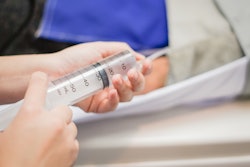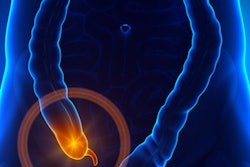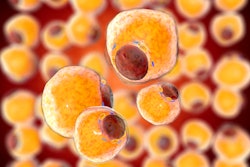It's definitely possible to reduce CT contrast volume, even in a busy radiology department, according to CT supervisor Gulnoor Sheriff at the University of Washington Medical Center, Montlake, in Seattle.
In fact, by taking practical action, Sheriff and colleagues have achieved an overall contrast volume reduction of more than 20% and saved the department $30,000 annually. How? In part through adopting new technology such as syringeless contrast injectors and making use of dual-energy CT scanners.
"Strategic investments in the right technology is key to CT contrast conservation, coupled with effective education and training as well as ongoing assessment and optimization of CT exam protocols," Sheriff told AuntMinnie.com.
The impetus to conserve CT contrast has been prompted in part by a 2022 supply chain disruption that made GE HealthCare's (GEHC) Omnipaque agent scarce due to a lockdown of the company's Shanghai production facility.
"It has become crucial to conserve contrast," Sheriff said. "We don't want to overuse or underuse it."
The University of Washington's radiology department performs 120 to 130 CT exams per day for inpatients, outpatients, and emergency patients. Of these exams, 60% use contrast, according to Sheriff.
That's why in 2021, the department invested in a syringeless power injector (CT Motion, GEHC), which has had a dramatic effect on the ability to conserve CT contrast. Sheriff cited a 2023 study that found that switching from single-use syringe-based injectors to multiuse syringeless injectors resulted in a 100 reduction in iodine-based contrast media waste.
"The old injectors used syringes that had to be manually filled, and the contrast came in single-use 50 mL, 100 mL or 150 mL bottles," Sheriff said. "So, if a medium-size patient needed 120 mL, the technologist would have to use a 150 mL bottle, and 30 mL would be wasted. The shift to syringeless injectors addressed this issue effectively. With the new syringeless injectors, it is possible to load two 500 mL bottles of contrast. The multiuse injector can be used for approximately 8-10 patients before requiring reloading. This not only efficient, saves on set-up time but also significantly reduces contrast wastage, providing a more cost-effective and environmentally friendly solution."
In addition to syringeless injectors, the department uses a dual-energy scanner (Revolution, GEHC). This technology enables the acquisition of diagnostic images at lower energies while maintaining the same level of diagnostic quality according to Sheriff.
| University of Washington's CT contrast volume reduction with improved protocols by patient size* | |||
|---|---|---|---|
| Patient size | Standard protocol contrast volume (mL) | Reduced volume protocol (mL) | Reduction percentage |
| Small (< 75 kg) | 25,017 mL | 21,460 mL | -14% |
| Medium (73 kg to 100 kg) | 25,210 mL | 20,480 mL | 19% |
| Large (> 100 kg) | 16,878 mL | 11,420 mL | 32% |
| *Data from Gulnoor Sheriff, University of Washington | |||
The technical adjustments for CT contrast conservation do require an accurate assessment of exam protocols, as well as staff education and training, Sheriff noted.
"Initially, the department had dual-energy scanners in place but continued to use outdated protocols," she explained. "Recognizing the need for optimization, radiologists and technologists collaborated to revise these protocols, aligning them with the capabilities of the new dual-energy scanners."
As well, staff need education and training in efficient practices -- specifically how to avoid unnecessary contrast waste, Sheriff said. One example is that the department has a strategy in place to load smaller contrast bottles during the night shift when patient volume is lower.
Sheriff also encouraged radiology departments to investigate contrast recycling programs as well, such as GEHC's initiative that is being used around the world. GEHC provides three-liter containers to collect unused and uncontaminated iodinated contrast media; technicians pour the leftover contrast from the injector syringe or bottle into the container, and once it's full, seal it, put it in a provided box, and return it to a GEHC facility in Norway. The company then extracts the iodine and recycles it to produce new contrast media.
It can be challenging to optimize CT contrast protocols, but the effort is worth it, according to Sheriff.
"It's exciting to get great diagnostic images with less contrast to our patients," she said.
Click below for Sheriff's suggestions on how to conserve CT contrast at your facility.




















